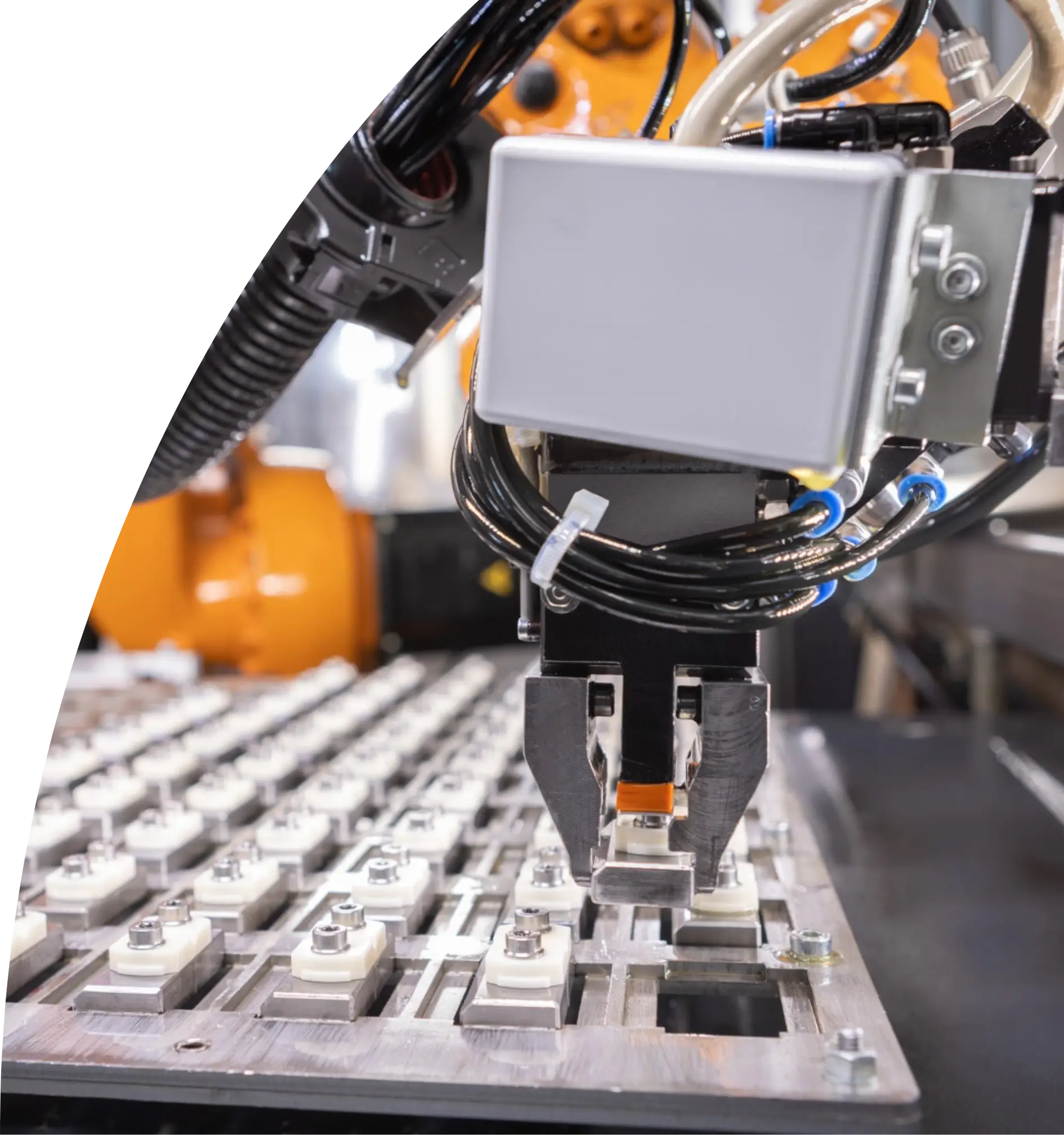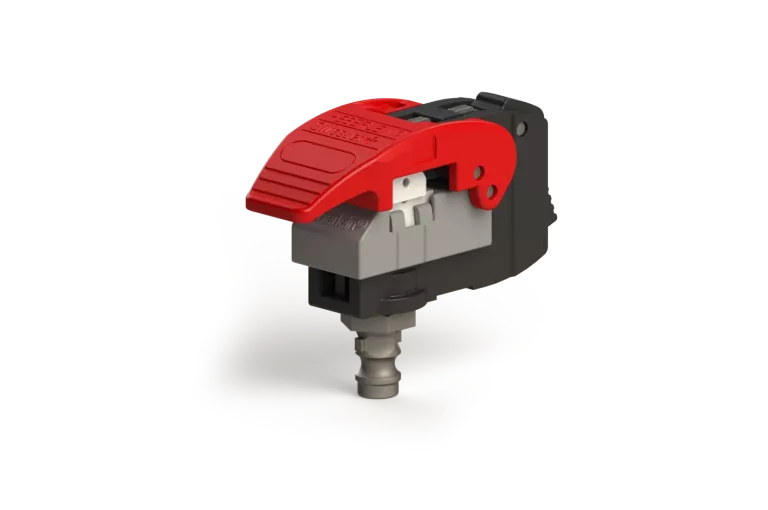Der SwissJet ist für die effektive Verwirbelung von Multifilamentgarnen während der Falschzwirn-Texturierung konzipiert. Die Düse hat ein mit speziellen Carbonfasern verstärktes Gehäuse, welche ihm eine besondere Festigkeit im Betrieb, eine lange Lebensdauer und ein sehr geringes Gewicht verleiht. Für die unterschiedlichen Garntypen sind diverse Düseneinsatze erhältlich.
HEBERLEIN. SWISSJET.
Eigenschaften und Vorteile.
Sortiment.
Serie APe
Mit der Serie APe sind deutliche Lufteinsparungen von bis zu 15% möglich. Der Austausch bestehender Düsen ist dank des «Plug&Play»-Ansatz innert Sekunden möglich. Während die Düsen helfen, die kostenintensive Ressource «Druckluft» zu minimieren, müssen keine Kompromisse bei der Garnqualität gemacht werden. Die Investition amortisiert sich innert kürzester Zeit.
Serie APh
Für höchste Anforderungen an die Knotenstabilität für nachgelagerte Prozesse wie z.B. das Weben. Umfangreiche Versuchsreihen haben gezeigt, dass bei einer Belastung von 1 cN/dtex eine Stabilität von bis zu 100% erreicht werden kann. Dies ermöglicht höhere Maschinengeschwindigkeiten und führt zu einer gesteigerten Produktivität. Alternativ kann der Schlichteauftrag reduziert werden, was sich positiv auf Kosten und Umwelt auswirkt.
Serie P
Mit der umfangreichen Serie P wird eine grosse Bandbreite von Anwendungen abgedeckt. Ob eine leichte Verwirbelungsdichte mit niedriger Stabilität benötigt wird, eine starke Verwirbelungsdichte, hohe Stabilität oder Mikrofilamentgarne bearbeitet werden – die Vielzahl an verfügbaren Düsentypen bietet eine passende wirtschaftliche Lösung. Auf Grund der sehr engen Toleranzen bietet diese Serie eine hohe Uniformität von Position zu Position. Kundenspezifische Typen sind auf Anfrage möglich.
Serie S
Die kostengünstige Alternative zur Serie P mit einem reduzierten Angebot an Düsentypen.
Technische Daten.
Einsatzbereich & Luftverbrauch
Serie APe
| Typ | Titer Ideal | Titer-Bereich | Formel Luftverbrauch | |
|---|---|---|---|---|
| Hohe Verwirbelungdichte (80 – 180 FP/m) – leichte bis mittlere Stabilität | ||||
| APe043 | 22 dtex | … 44 dtex | qvn = 0.196 x (pe + 1) | |
| APe141 | 50 dtex | … 67 dtex | qvn = 0.320 x (pe + 1) | |
| APe142 | 78 dtex | … 110 dtex | qvn = 0.474 x (pe + 1) | |
| APe143 | 110 dtex | 50 … 167 dtex | qvn = 0.602 x (pe + 1) | |
| APe243 | 167 dtex | 78 … 240 dtex | qvn = 0.786 x (pe + 1) | |
| APe244 | 330 dtex | 140 … 390 dtex | qvn = 1.042 x (pe + 1) | |
| APe246 | 450 dtex | 200 … 630 dtex | qvn = 1.234 x (pe + 1) | |
| APe247 | 660 dtex | 390 … 800 dtex | qvn = 1.577 x (pe + 1) | |
Serie APh
| Typ | Titer Ideal | Titer-Bereich | Ø Luftkanal | Formel Luftverbrauch |
|---|---|---|---|---|
| Mittlere Verwirbelungdichte (70 – 90 FP/m) – hohe bis sehr hohe Stabilität | ||||
| APh212 | 167 dtex | 78 … 330 dtex | 1.4 mm | qvn = 0.911 x (pe + 1) |
| APh213 | 330 dtex | 110 … 630 dtex | 1.6 mm | qvn = 1.189 x (pe + 1) |
| APh215 | 450 dtex | 240 … 800 dtex | 1.8 mm | qvn = 1.506 x (pe + 1) |
Serie P
| Typ | Titer Ideal | Titer-Bereich | Ø Luftkanal | Formel Luftverbrauch |
|---|---|---|---|---|
| Niedrige Verwirbelungsdichte (40 – 60 FP/m) – niedrige Stabilität | ||||
| P310-2 | 110 dtex | 50 … 167 dtex | 1.4 mm | qvn = 0.911 x (pe + 1) |
| P410-2 | 167 dtex | 78 … 240 dtex | 1.6 mm | qvn = 1.189 x (pe + 1) |
| Mittlere Verwirbelungdichte (70 – 90 FP/m) – mittlere bis hohe Stabilität | ||||
| P211-2 | 78 dtex | 20 … 140 dtex | 1.3 mm | qvn = 0.786 x (pe + 1) |
| P212-2 | 167 dtex | 78 … 330 dtex | 1.4 mm | qvn = 0.911 x (pe + 1) |
| P213-2 | 330 dtex | 110 … 630 dtex | 1.6 mm | qvn = 1.189 x (pe + 1) |
| P215-2 | 450 dtex | 240 … 800 dtex | 1.8 mm | qvn = 1.506 x (pe + 1) |
| P312-2 | 660 dtex | 330 … 1100 dtex | 2.06 mm | qvn = 1.859 x (pe + 1) |
| P313-2 | 990 dtex | 660 … 1200 dtex | 2.2 mm | qvn = 2.315 x (pe + 1) |
| P412-2 | 1200 dtex | 800 … 2000 dtex | 2.5 mm | qvn = 2.772 x (pe + 1) |
| P414-2 | 1800 dtex | 990 … 2400 dtex | 3.0 mm | qvn = 3.875 x (pe + 1) |
| Hohe Verwirbelungdichte (80 – 160 FP/m) – niedrige Stabilität | ||||
| P140-2 | 78 dtex | 20 … 110 dtex | 0.92 mm | qvn = 0.393 x (pe + 1) |
| Hohe Verwirbelungdichte (80 – 160 FP/m) – leichte bis mittlere Stabilität | ||||
| P141-2 | 50 dtex | … 67 dtex | 0.88 mm | qvn = 0.360 x (pe + 1) |
| P142-2 | 78 dtex | … 110 dtex | 1.1 mm | qvn = 0.562 x (pe + 1) |
| P143-2 | 110 dtex | 50 … 167 dtex | 1.24 mm | qvn = 0.712 x (pe + 1) |
| P243-2 | 167 dtex | 78 … 240 dtex | 1.4 mm | qvn = 0.911 x (pe + 1) |
| P244-2 | 330 dtex | 140 … 390 dtex | 1.57 mm | qvn = 1.142 x (pe + 1) |
| P246-2 | 450 dtex | 200 … 630 dtex | 1.77 mm | qvn = 1.451 x (pe + 1) |
| P247-2 | 660 dtex | 390 … 800 dtex | 2.0 mm | qvn = 1.785 x (pe + 1) |
Serie S
| Typ | Titer Ideal | Titer-Bereich | Ø Luftkanal | Formel Luftverbrauch |
|---|---|---|---|---|
| Hohe Verwirbelungsdichte (80 – 160 FP/m) – leichte bis mittlere Stabilität | ||||
| S1 | 78 dtex | … 110 dtex | 1.1 mm | qvn = 0.562 x (pe + 1) |
| S2 | 110 dtex | 50 … 167 dtex | 1.24 mm | qvn = 0.712 x (pe + 1) |
| S3 | 167 dtex | 78 … 240 dtex | 1.4 mm | qvn = 0.911 x (pe + 1) |
| Mittlere Verwirbelungsdichte (70 – 90 FP/m) – mittlere bis hohe Stabilität | ||||
| S12 | 167 dtex | 78 … 330 dtex | 1.4 mm | qvn = 0.911 x (pe + 1) |
| S13 | 330 dtex | 110 … 630 dtex | 1.6 mm | qvn = 1.189 x (pe + 1) |
| S14 | 450 dtex | 240 … 800 dtex | 1.8 mm | qvn = 1.506 x (pe + 1) |
| S16 | 660 dtex | 330 … 1100 dtex | 2.06 mm | qvn = 1.859 x (pe + 1) |
| S18 | 1200 dtex | 800 … 2000 dtex | 2.5 mm | qvn = 2.772 x (pe + 1) |
Beispiele Lufteinsparung
Serie APe versus P
| Typ | Formel | Typ | Formel | Lufteinsparung1) | |
|---|---|---|---|---|---|
| APe141 | qvn = 0.320 x (pe + 1) | P141-2 | qvn = 0.360 x (pe + 1) | 11.2 % | 0.120 m3/h |
| APe142 | qvn = 0.474 x (pe + 1) | P142-2 | qvn = 0.562 x (pe + 1) | 15.7 % | 0.265 m3/h |
| APe143 | qvn = 0.602 x (pe + 1) | P143-2 | qvn = 0.712 x (pe + 1) | 15.5 % | 0.331 m3/h |
| APe243 | qvn = 0.786 x (pe + 1) | P243-2 | qvn = 0.911 x (pe + 1) | 13.8 % | 0.377 m3/h |
| APe244 | qvn = 1.042 x (pe + 1) | P244-2 | qvn = 1.142 x (pe + 1) | 8.7 % | 0.298 m3/h |
| APe246 | qvn = 1.234 x (pe + 1) | P246-2 | qvn = 1.451 x (pe + 1) | 15.0 % | 0.675 m3/h |
| APe247 | qvn = 1.577 x (pe + 1) | P247-2 | qvn = 1.785 x (pe + 1) | 11.6 % | 0.649 m3/h |
Anforderungen Druckluft
| Überdruck | 0.5 … 6.0 bar |
Anforderungen an die Druckluftqualität siehe Druckluftreinheit.
Betriebsanleitung anfordern.
Sie möchten eine Betriebsanleitung zu Ihrem Produkt erhalten? Jetzt anfordern.


